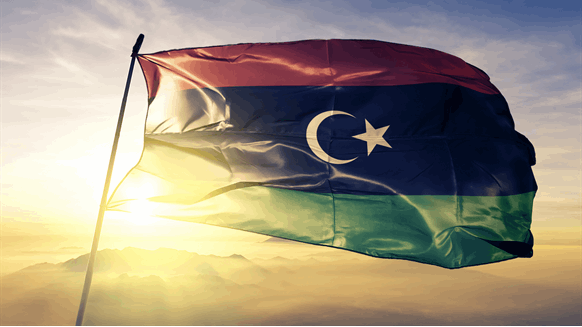Over the last decade, Libya has struggled to get its oil industry back on track due to political disruptions and a lack of foreign investment in the sector. Years of political unrest drove foreign investors out of the market, leaving many oil operations to sit untouched for years and driving oil output down. Achieving high levels of oil output once again will require significant investment in exploration activities, drilling and infrastructure renovation and development, but there is significant potential for the country with Africa’s largest oil reserves.
Oil was first discovered in Libya in 1959, after which many foreign players entered the market to develop the country’s assets for export. Under the dictatorship of Colonel Ghaddafi, Libya’s oil industry experienced highs and lows as relations between Libya and the West regularly shifted. In the early 2000s, when the UN and U.S. lifted sanctions that they had imposed on Libya, several major Western oil companies resumed operations in Libya, attracting more players to the region. Libya’s oil output rose from 1.47 million bpd in 2000 to nearly 1.8 million bpd in 2010, a trend that was expected to continue.
Hopes of a stable, growing oil market were dashed when the Arab Spring took place in 2011, followed by years of political instability. And no government since has been able to return the industry to its former glory. Libya’s political system is currently divided between the eastern-based Government of National Stability, led by Osama Hamada, and the UN-backed Government of National Unity, led by Abdul Hamid Dbeibeh, based in Tripoli in the west. Despite ongoing political tension, the country is eager to get its energy industry back on track to respond to its energy and economic needs.
This month, Libya’s Oil and Gas Minister Mohamed Oun, pledged to discover “new oil and gas fields.” He stated, “We still have fields yet to be explored, including those in the Mediterranean and central regions, where new oil and gas fields will be discovered.” Farhat Omar Bengdara, the chairman of the National Oil Corporation (NOC), emphasised the important role the state-owned oil company has played in boosting production and fostering partnerships with international partners in recent years.
While Oun acknowledged the significant challenges facing the country’s oil industry, he is optimistic about its potential. He explained, “Governments, the private sector, and international bodies, including the Board of Directors of the National Oil Corporation, with the help of global think tanks, have developed an ambitious strategy built on relevant global trends in the energy field.” He said that the strategy is aimed at helping Libya recover its former energy status, with the target of raising production to 2 million bpd. Libya currently produces more than 1.2 million bpd. With around 90 percent of Libya’s revenues coming from oil, it is essential that Libya achieve this goal.
Despite the optimism, several challenges remain, with recent protests leading to a shutdown in production. Earlier this month, the NOC was forced to shut down operations at Libya’s largest oil field after protestors demonstrated over fuel shortages. Around a week later, another set of protestors threatened to shut down two oil and gas facilities close to the capital of Tripoli to campaign against corruption. Protestors were requesting that the NOC chairman Farhat Bengdara be dismissed.
Libya has previously fallen short of its oil goals due to political disruption and the inability to attract the desired levels of foreign investment. In 2017, the North African country announced a 2.2 million bpd target for 2023 due to political issues and poor sectoral governance. However, Libya has significant potential as it holds the largest oil reserves in Africa, with around 48.36 billion barrels, much of which remains untapped. OPEC is supporting Libya’s aim to develop its oil industry by excluding it from any quotas. But Libya will need substantially higher levels of foreign investment to get its oil industry back on track.
According to Oun, the NOC requires a budget of $17 billion to raise the country’s oil output to 2 million bpd within the next three to five years. This funding will go towards increasing production in NOC’s oil fields, as well as maintaining key infrastructure, such as pipelines. Some of the country’s pipelines were installed in the 1960s and require significant work or replacement to ensure their longevity. The conflict seen in Libya in recent years also resulted in the destruction of around 70 percent of the country’s oil storage capacity, which will need rebuilding.
Libya is highly optimistic about the future of its oil industry, with huge potential to explore untapped reserves and increase output. However, several challenges are standing in its way. The country remains politically divided, which continues to deter foreign investors from committing to new projects. Further, its ageing infrastructure requires vast amounts of funding to bring it up to scratch. Nevertheless, Libya will likely continue to depend heavily on oil for its revenues meaning that it must seek greater stability in its oil sector to attract higher levels of investment to support the country’s economic security.

 Iran Energy News Oil, Gas, Petrochemical and Energy Field Specialized Channel
Iran Energy News Oil, Gas, Petrochemical and Energy Field Specialized Channel



